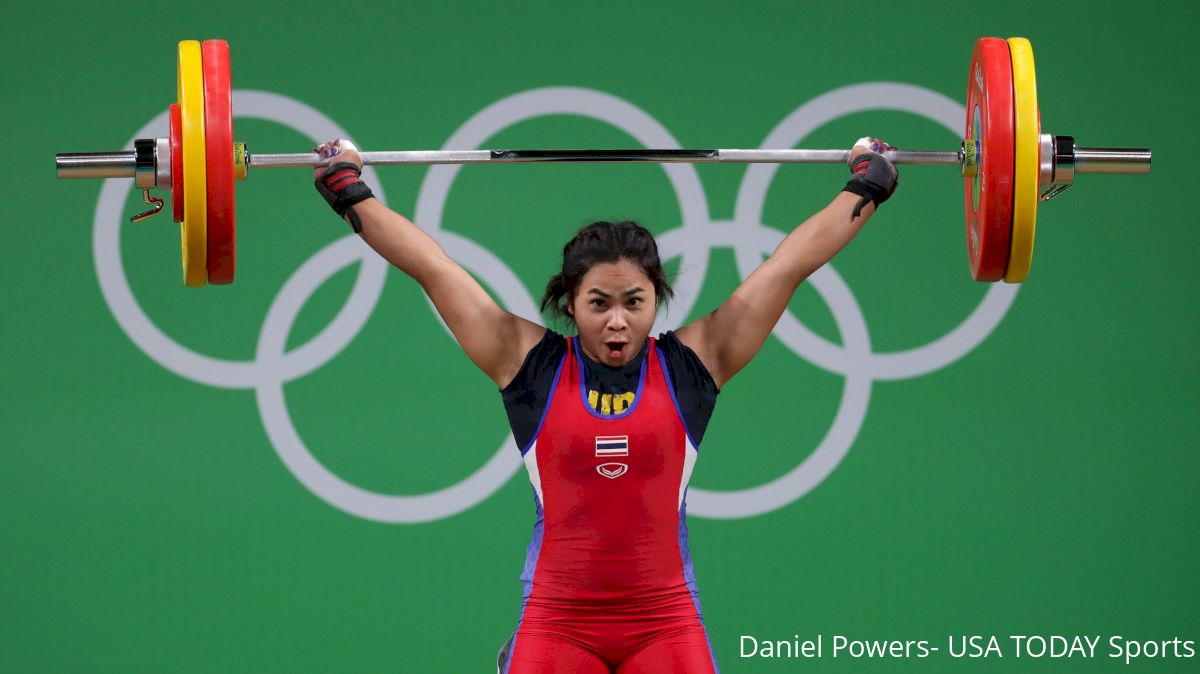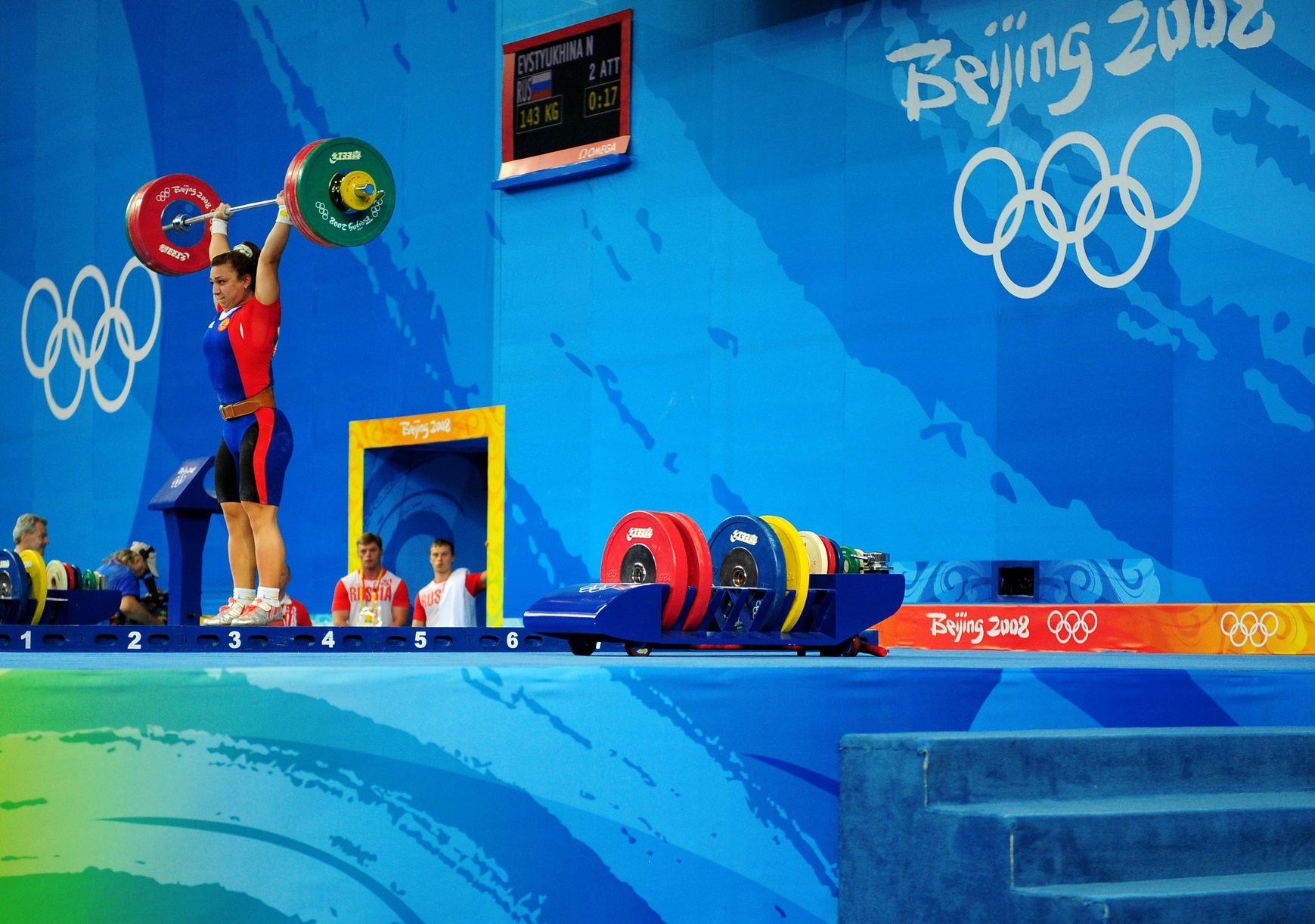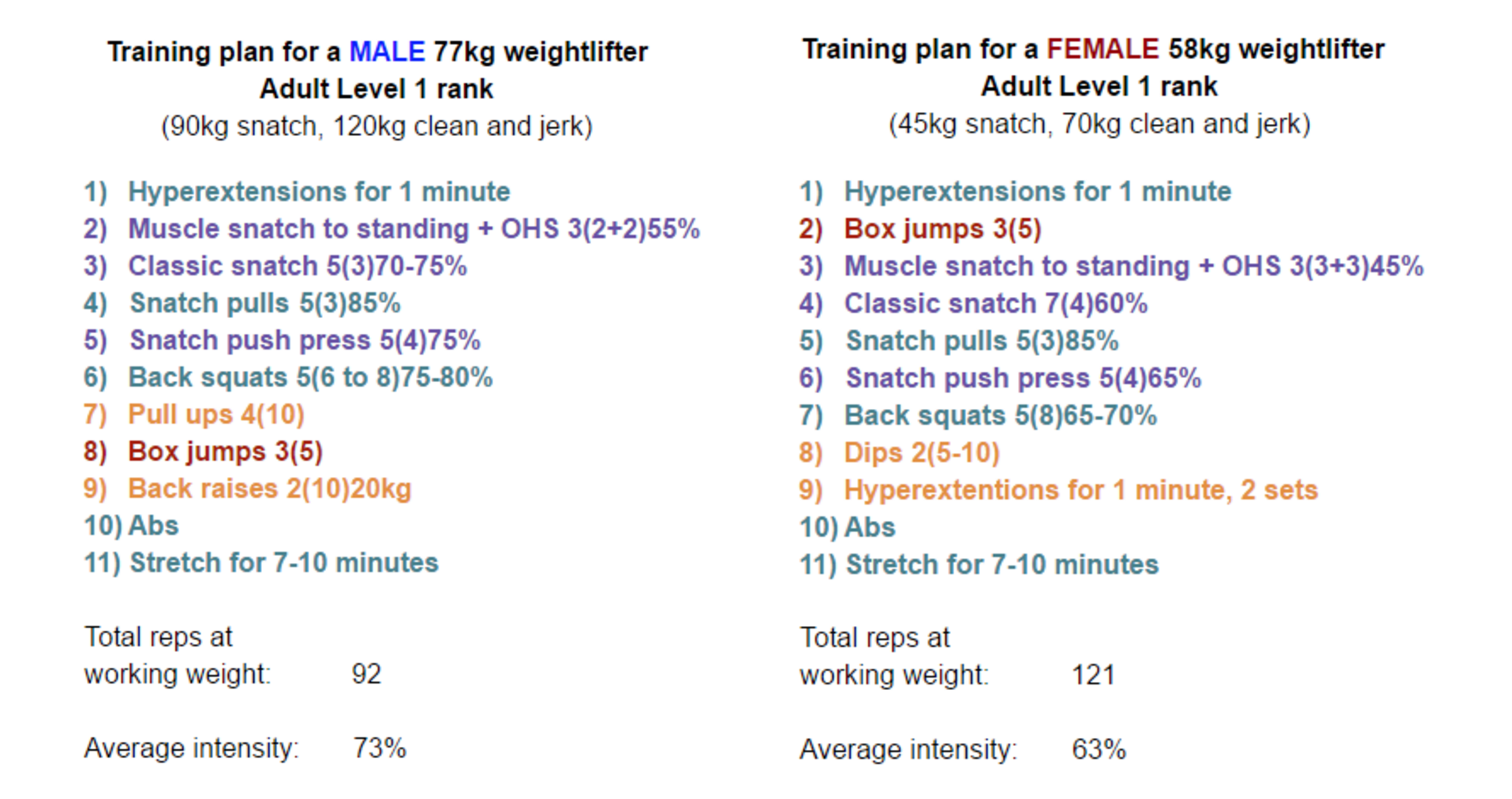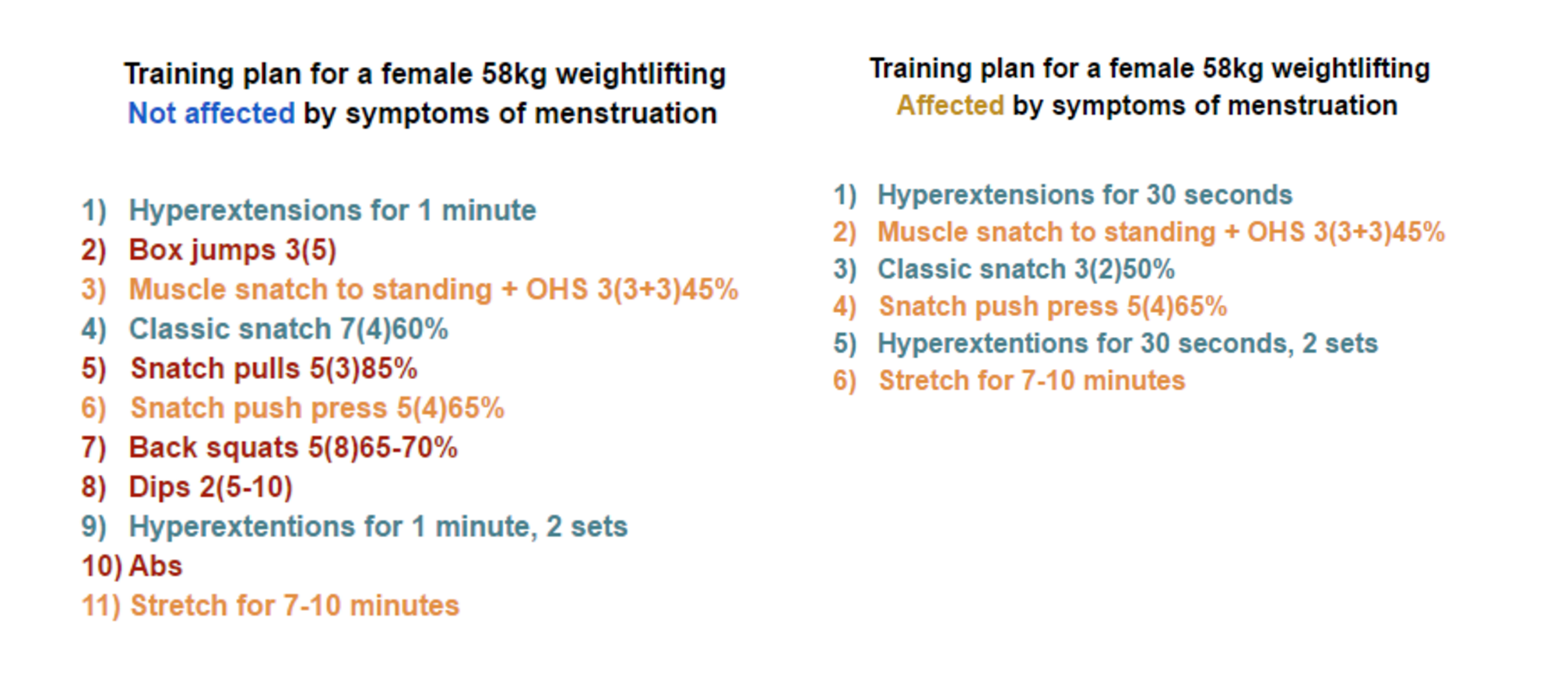Women In Weightlifting Part 1
Women In Weightlifting Part 1
This is the first in a three part series by Yasha Kahn, a weightlifter and weightlifting coach with great experience in the field with help from Nadezhda Ev

This is the first in a three part series by Yasha Kahn, a weightlifter and weightlifting coach with great experience in the field with help from Nadezhda Evstyukhina, a world champion weightlifter and Olympian.
A young female weightlifter once asked me whether she should be training differently from the guys at her gym. Women make up at least half of our weightlifting community, yet nearly all of the resources available are designed for male weightlifters. This forces most women to rely on training plans that simply aren't designed for their physiology.
I asked one of the best female weightlifters in the world, multiple-time world champion Nadezhda (Nadia) Evstyukhina, about topics she thinks women in weightlifting (and their coaches) should know to get the most out of their training.

Together, Nadia and I set out to cover each of the following three topics in detail:
The entire body must be strong for weightlifting. The maximum amount of weight that a lifter can snatch or clean and jerk is limited not by their strongest muscle groups, but by their weakest. If their legs are strong enough to pull 100kg, but their upper body isn't strong enough to support 100kg overhead, the lifter won't complete the lift.
Women typically have a harder time developing speed in their lower bodies and muscle mass in their upper bodies than men. The following points should be considered when designing training plans for female weightlifters:
Jumping exercises, such as box jumps, are a great exercise for developing lower-body speed and explosiveness. Female weightlifters should use jumping exercises more frequently than men of the same level. And while men typically perform jumping exercises towards the end of training, female weightlifters should consider doing them during their warm up.
Building upper-body muscle mass is more difficult for women than for men. In addition, women are typically more flexible, which increases the likelihood of injury when working with heavy weights during certain exercises. It's advised that during the base phase, women should perform full-body exercises that require a lot of upper-body strength with less weight (as a percent of max) but for more reps. This increases hypertrophy, strengthens joints, and reduces the risk of injury.
It is also advised that women perform several General Physical Preparation exercises per training session that specifically target the upper-body muscles used in weightlifting. These include the trapezius and tricep muscles, and the muscles of the shoulder joint, lumbar, and thoracic spine.
Nadia recommends the following GPP exercises to be performed frequently:
Below is a training plan designed for two lifters of the same level. The program on the left is written for a 77kg male lifter, Adult Level-1 rank. The program on the right is written for a 58kg female lifter, also Adult Level-1 rank.

The two training plans for the male and female lifters are very similar. Both start with hyperextentions to warm up the back, have the same lower-body exercises (at the same rep and weight), and finish the workout with ab exercises and stretching.
However, note that:
As seen in these two plans, female lifters typically lift a smaller percentage of their maximum (lower average intensity), but perform more reps than the men. The higher volume (Intensity x reps) aids in hypertrophy and reduces the risk of injury; however, it also requires women to focus on recovery activities more than men.
Female weightlifters should visit the sauna and receive massages more often than men to loosen tight muscles, increase blood flow to wash away free radicals, and increase the amount of nutrients passing through the recovering muscles.
Female weightlifters and their coaches should know how a training plan should be adjusted during menstruation. Women generally fall into one of two categories:
The workload reduction shouldn't be across all exercises, as some exercises won't be affected by menstruation symptoms. Exercises that don't require much speed or back rigidity can remain the same in the training plan. However, exercises that do require a lot of speed or back rigidity or are non-essential GPP should either not be performed, or be performed at reduced weight.
Below, the training plan on the left is written for a 58kg female lifter unaffected by menstruation symptoms. The program on the right is written for the same lifter, but who is affected by menstruation symptoms.

I hope this is helpful. None of the above practices are set in stone, but they should give you a sense of the guidelines many professional female weightlifters follow. Keep in mind that every lifter is unique, so lifters must listen to how they feel, and train accordingly.
If you have any questions or suggestions for topics you'd like to read about regarding female lifters, let us or Yasha know! Nadia is a huge asset to this discussion and will be happy to chime in.
Nadia is starting an Online Team for female weightlifters--specifically, those who already know the main lifts, but who haven't yet qualified for national competition. Athletes will be given weekly training plans, video analysis, and a forum where any and all weightlifting questions can be asked and discussed.
If you'd like to learn more, or would like to join a great team with a great coach, message Yasha or Nadia!
A young female weightlifter once asked me whether she should be training differently from the guys at her gym. Women make up at least half of our weightlifting community, yet nearly all of the resources available are designed for male weightlifters. This forces most women to rely on training plans that simply aren't designed for their physiology.
I asked one of the best female weightlifters in the world, multiple-time world champion Nadezhda (Nadia) Evstyukhina, about topics she thinks women in weightlifting (and their coaches) should know to get the most out of their training.

Together, Nadia and I set out to cover each of the following three topics in detail:
- How to design training plans for women
- The differences in technique between men and women
- How sex affects men vs. women before training or a competition
How to design training plans for women
The entire body must be strong for weightlifting. The maximum amount of weight that a lifter can snatch or clean and jerk is limited not by their strongest muscle groups, but by their weakest. If their legs are strong enough to pull 100kg, but their upper body isn't strong enough to support 100kg overhead, the lifter won't complete the lift.
Women typically have a harder time developing speed in their lower bodies and muscle mass in their upper bodies than men. The following points should be considered when designing training plans for female weightlifters:
Lower-body speed in female weightlifters
Jumping exercises, such as box jumps, are a great exercise for developing lower-body speed and explosiveness. Female weightlifters should use jumping exercises more frequently than men of the same level. And while men typically perform jumping exercises towards the end of training, female weightlifters should consider doing them during their warm up.
Upper-body muscle mass in female weightlifters
Building upper-body muscle mass is more difficult for women than for men. In addition, women are typically more flexible, which increases the likelihood of injury when working with heavy weights during certain exercises. It's advised that during the base phase, women should perform full-body exercises that require a lot of upper-body strength with less weight (as a percent of max) but for more reps. This increases hypertrophy, strengthens joints, and reduces the risk of injury.
It is also advised that women perform several General Physical Preparation exercises per training session that specifically target the upper-body muscles used in weightlifting. These include the trapezius and tricep muscles, and the muscles of the shoulder joint, lumbar, and thoracic spine.
Nadia recommends the following GPP exercises to be performed frequently:
- Hyperextentions to develop the lumbar and thoracic spine muscles.
- Arm pulls from power position to develop biceps, and trapezius and rhomboid muscles.
- Kettlebell side bends to develop the back and obliques.
- Kettlebell high pulls to develop shoulders.
- Snatch press from below shoulders to develop trapezius, triceps, and shoulder muscles.
- Standing thoracic bends to develop thoracic spine muscles (rhomboids).
- Side-to-side kettlebell RDLs to develop lumbar spine muscles.
- RDL with trap pull to develop trapezius and lumbar muscles.
Designing a training plan
Below is a training plan designed for two lifters of the same level. The program on the left is written for a 77kg male lifter, Adult Level-1 rank. The program on the right is written for a 58kg female lifter, also Adult Level-1 rank.

The two training plans for the male and female lifters are very similar. Both start with hyperextentions to warm up the back, have the same lower-body exercises (at the same rep and weight), and finish the workout with ab exercises and stretching.
However, note that:
- The box jumps are performed earlier in the workout for the female lifter because they are a higher-priority exercise for women, and deserve to be done when the body is not yet fatigued.
- Exercises that depend heavily on upper-body strength are performed at lower weights (as a percentage of maximum) for women than for men, but at higher volume (more reps).
- GPP exercises that target the muscles that are harder for women to develop are performed instead of the more general-strength exercises performed by the male lifter.
As seen in these two plans, female lifters typically lift a smaller percentage of their maximum (lower average intensity), but perform more reps than the men. The higher volume (Intensity x reps) aids in hypertrophy and reduces the risk of injury; however, it also requires women to focus on recovery activities more than men.
Female weightlifters should visit the sauna and receive massages more often than men to loosen tight muscles, increase blood flow to wash away free radicals, and increase the amount of nutrients passing through the recovering muscles.
Programming for female weightlifters during menstruation
Female weightlifters and their coaches should know how a training plan should be adjusted during menstruation. Women generally fall into one of two categories:
- Women who have fewer symptoms and don't experience much discomfort. These women often feel an increase in strength and endurance, and have a hormonal surge that could actually aid them in reaching personal bests in various exercises. Women who fall into this category don't need to change their training during menstruation.
- Women who feel severe pain in the abdomen. These women generally experience fatigue, lack power, and aren't able to hold the rigidity in the back required for heavy lifts. Women who fall into this category should reduce their training workload for 1-3 days when symptoms are at their worst.
Below, the training plan on the left is written for a 58kg female lifter unaffected by menstruation symptoms. The program on the right is written for the same lifter, but who is affected by menstruation symptoms.

- To reduce the workload, non-essential exercises that require rigidity, speed, or abdominal work are removed from the training plan on the right.
- Essential exercises that require rigidity or speed are left in the program but are performed with less weight or at a lower volume.
- Exercises that aren't affected much by lack of speed or rigidity remain in the program.
I hope this is helpful. None of the above practices are set in stone, but they should give you a sense of the guidelines many professional female weightlifters follow. Keep in mind that every lifter is unique, so lifters must listen to how they feel, and train accordingly.
If you have any questions or suggestions for topics you'd like to read about regarding female lifters, let us or Yasha know! Nadia is a huge asset to this discussion and will be happy to chime in.
Nadia is starting an Online Team for female weightlifters--specifically, those who already know the main lifts, but who haven't yet qualified for national competition. Athletes will be given weekly training plans, video analysis, and a forum where any and all weightlifting questions can be asked and discussed.
If you'd like to learn more, or would like to join a great team with a great coach, message Yasha or Nadia!